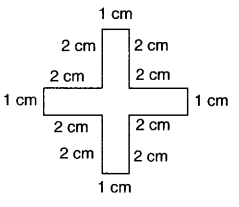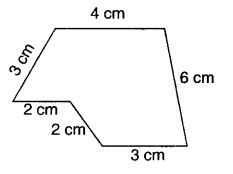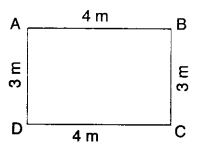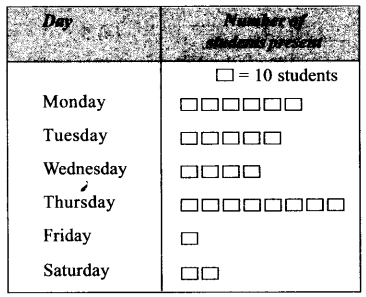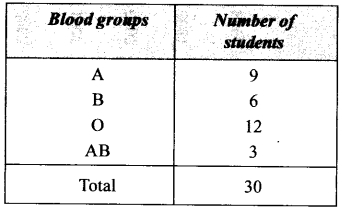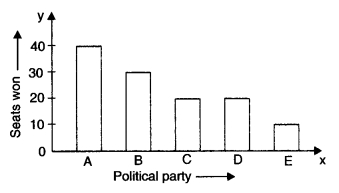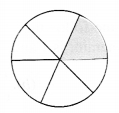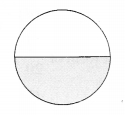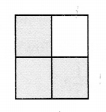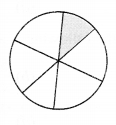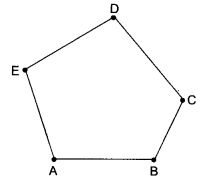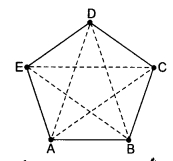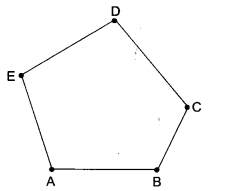CBSE Class 6 Maths – MCQ and Online Tests – Unit 12 – Ratio and Proportion
Every year CBSE students attend Annual Assessment exams for 6,7,8,9,11th standards. These exams are very competitive to all the students. So our website provides online tests for all the 6,7,8,9,11th standards’ subjects. These tests are also very effective and useful for those who preparing for any competitive exams like Olympiad etc. It can boost their preparation level and confidence level by attempting these chapter wise online tests.
These online tests are based on latest CBSE syllabus. While attempting these, our students can identify their weak lessons and continuously practice those lessons for attaining high marks. It also helps to revise the NCERT textbooks thoroughly.

CBSE Class 6 Maths – MCQ and Online Tests – Unit 12 – Ratio and Proportion
Question 1.
The speed of Shubham is 6 km per hour. The speed of Yash is 2 km per hour. The ratio of the speed of Shubham to the speed of Yash is
(a) 2:3
(b) 3:1
(c) 1:3
(d) 3:2.
Answer
Answer: (b)
Hint:
\(\frac { 6 }{ 2 }\) = \(\frac { 3 }{ 1 }\) = 3 : 1
Question 2.
Which of the following are in proportion?
(a) 2,3,20,30
(b) 3,4,15,18
(c) 1,3,11,22
(d) 2,5,40,80.
Answer
Answer: (a)
Hint:
2 : 3 = 20 : 30
Question 3.
Which of the following is true?
(a) 15:40 :: 10:30
(b) 16:48 :: 25:75
(c) 40:60 :: 30:40
(d) 20:100 :: 30:120.
Answer
Answer: (b)
Hint:
16 : 48 = \(\frac { 16 }{ 48 }\) = \(\frac{16 \div 16}{48 \div 16}\) = \(\frac { 1 }{ 3 }\) = 1 : 3
25 : 75 = \(\frac { 25 }{ 75 }\) = \(\frac{25 \div 25}{75 \div 25}\) = \(\frac { 1 }{ 3 }\) = 1 : 3
Question 4.
The length and breadth of a rectangular park are 50 m and 40 m respectively. Find the ratio of the length to the breadth of the park.
(a) 4:5
(b) 4:1
(c) 5:1
(d) 5:4.
Answer
Answer: (d)
Hint:
\(\frac { 50 }{ 40 }\) = \(\frac { 5 }{ 4 }\) = 5 : 4
Question 5.
The ratio 40 cm to 1 m is
(a) 2:5
(b) 3:5
(c) 4:5
(d) 5:2.
Answer
Answer: (a)
Hint:
1 m = 100 cm
\(\frac { 40 }{ 100 }\) = \(\frac { 2 }{ 5 }\) = 2 : 5
Question 6.
The cost of a pen is ₹ 10. The cost of a penci 1 is ₹ 2. How many times of the cost of a pencil is the cost of a pen?
(a) 5 times
(b) 2 times
(c) 10 times
(d) none of these.
Answer
Answer: (a)
Hint:
10 = 5 × 2
Question 7.
In a family, there are 8 males and 4 females. The ratio of the number of females to the number of males is
(a) 1:2
(b) 1:4
(c) 1:8
(d) 2:1.
Answer
Answer: (a)
Hint:
\(\frac { 4 }{ 8 }\) = \(\frac { 1 }{ 2 }\) = 1 : 2
Question 8.
Which of the following ratios is equivalent to 2:3?
(a) 4:8
(b) 4:9
(c) 6:9
(d) 6:12.
Answer
Answer: (c)
Hint:
2 : 3 = \(\frac { 2 }{ 3 }\) = \(\frac{2 \times 3}{3 \times 3}\) = \(\frac { 6 }{ 9 }\) = 6 : 9
Question 9.
Which of the following ratios is not equiva-lent to 10:5?
(a) 1:2
(b) 2:1
(c) 20:10
(d) 30:15.
Answer
Answer: (a)
Hint:
10 : 5 = \(\frac { 10 }{ 5 }\) = \(\frac{10 \div 5}{5 \div 5}\) = \(\frac { 2 }{ 1 }\) = 2 : 1
20 ÷ 10 = \(\frac { 20 }{ 10 }\) = \(\frac{20 \div 10}{10 \div 10}\) = \(\frac { 2 }{ 1 }\) = 2 : 1
30 ÷ 15 = \(\frac { 30 }{ 15 }\) = \(\frac{30 \div 15}{15 \div 15}\) = \(\frac { 2 }{ 1 }\) = 2 : 1
Question 10.
Find the ratio of number of circles and number of squares inside the following rectangle: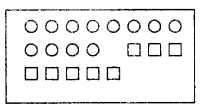
(a) 3:1
(b) 2:1
(c) 2:3
(d) 3:2
Answer
Answer: (d)
Hint:
12 : 8 = \(\frac { 12 }{ 8 }\) = \(\frac{12 \div 4}{8 \div 4}\) = \(\frac { 3 }{ 2 }\) = 3 : 2
Question 11.
The monthly salary of Hari Kishan is ₹ 80000. The monthly salary of Manish is ₹ 40000. How many times of the salary of Manish is the salary of Hari Kishan?
(a) 2 times
(b) 4 times
(c) 3 times
(d) 8 times.
Answer
Answer: (a)
Hint:
80000 = 2 × 40000
Question 12.
There are 30 boys and 20 girls in a class. The ratio of the number of girls to the number of boys is
(a) 2:3
(b) 3:2
(c) 2:5
(d) 3:5.
Answer
Answer: (a)
Hint:
\(\frac { 20 }{ 30 }\) = \(\frac { 2 }{ 3 }\) = 2 : 3
Question 13.
There are 20 teachers in a school of 500 students. The ratio of the number of teachers to the number of students is
(a) 1:20
(d) 1:50
(c) 1:25
(d) 25:1.
Answer
Answer: (c)
Hint:
20 : 500 = \(\frac { 20 }{ 500 }\) = \(\frac { 1 }{ 25 }\) = 1 : 25
Question 14.
There are 25 boys and 25 girls in a class. The ratio of the number of boys to the total number of students is
(a) 1:2
(b) 1 : 3
(c) 2:3
(d) 3:2.
Answer
Answer: (a)
Hint:
\(\frac{25}{25+25}\) = \(\frac { 25 }{ 50 }\) = \(\frac { 1 }{ 2 }\) = 1 : 2
Question 15.
The ratio of 25 minutes to 1 hour is
(a) 7:5
(b) 5:12
(c) 12:5
(d) 5:7.
Answer
Answer: (b)
Hint:
1 hour = 60 minutes
25 : 60 = \(\frac { 25 }{ 60 }\) = \(\frac { 5 }{ 12 }\) = 5 : 12
Question 16.
Out of 30 students in a class, 20 like cricket and 10 like Hockey. The ratio of the number of students liking Hockey to the total number of students is
(a) 3:1
(b) 1:3
(c) 2:3
(d) 1:2.
Answer
Answer: (b)
Hint:
10 : 30 = \(\frac { 10 }{ 30 }\) = \(\frac { 1 }{ 3 }\) = 1 : 3
Question 17.
The cost of 1 dozen bananas is ₹ 30. The cost of 6 oranges is ₹ 18. The ratio of the cost of a i banana to the cost of an orange is
(a) 3:2
(b) 2:3
(c) 6:5
(d) 5:6.
Answer
Answer: (d)
Hint:
30 : 2 × 18 = \(\frac{30}{2 \times 18}=\frac{30}{36}=\frac{5}{6}\) = \(\frac { 5 }{ 6 }\) = 5 : 6
Question 18.
The present age of Hari Kishan is 60 years. The present age of Manish is 30 years. The ratio of the age of Manish to the age of Hari Kishan 10 years ago was
(a) 2:5
(b) 5:2
(c) 2:3
(d) 3:2.
Answer
Answer: (a)
Hint:
30 – 10 : 60 – 10 = 20 : 50
= \(\frac { 20 }{ 50 }\) = \(\frac { 2 }{ 5 }\) = 2 : 5
Question 19.
100 students appeared in annual examination. 60 students passed. The ratio of the number of students who failed to the total number of students is
(a) 5:2
(b) 2:5
(c) 2:3
(d) 3:2.
Answer
Answer: (b)
Hint:
100 – 60 = 40
40 : 100 = \(\frac { 40 }{ 100 }\) = \(\frac{40 \div 20}{100 \div 20}\) = \(\frac { 2 }{ 5 }\) = 2 : 5
Question 20.
₹ 100 are divided between Sangeeta and Manish in the ratio 4:1. Find the amount Sangeeta gets.
(a) ₹ 80
(b) ₹ 20
(c) ₹ 60
(b) ₹ 50.
Answer
Answer: (a)
Hint:
\(\frac{4}{4+1}\) × 100 = \(\frac { 4 }{ 5 }\) × 100 = 4 × 20 = 80
Question 21.
The height of Apala is 150 cm. The height of Pari is 120 cm. The ratio of the height of Apala to the height of Pari is
(a) 4:5
(b) 5:4
(c) 5:2
(d) 4:1.
Answer
Answer: (b)
Hint:
\(\frac { 150 }{ 120 }\) = \(\frac { 15 }{ 12 }\) = \(\frac { 5 }{ 4 }\) = 5 : 4
Question 22.
The cost of a car is ₹ 3,00,000. The cost of a motorbike is ₹ 50,000. The ratio of the cost of motorbike to the cost of car is
(a) 1:6
(b) 1:5
(c) 1:4
(d) 1:3.
Answer
Answer: (a)
Hint:
\(\frac { 50,000 }{ 3,00,000 }\) = \(\frac { 1 }{ 6 }\) = 1 : 6
Question 23.
Which of the following is false?
(a) 25 g : 30 g :: 40 kg : 48 kg
(b) 81 : 91 :: 24h : 27h
(c) 32 m : 40 m :: 6 minutes : 12 minutes
(d) 25 km : 60 km :: ₹ 10 : ₹ 24.
Answer
Answer: (c)
Hint:
32 m : 40 m = \(\frac { 32 }{ 40 }\) = \(\frac{32 \div 8}{40 \div 8}\) = \(\frac { 4 }{ 5 }\) = 4 : 5
6 minutes : 12 minutes = \(\frac { 6 }{ 12 }\) = \(\frac{6 \div 6}{12 \div 6}\)
= \(\frac { 1 }{ 2 }\) = 1 : 2
4 : 5 ≠ 1 : 2
Question 24.
Which of the following statement is not true?
(a) 4 : 7 = 5 : 9
(b) ₹ 5 : ₹ 25 = 12g : 60g
(c) 30 : 80 = 6 : 16
(d) 12 : 36 = 14 : 42.
Answer
Answer: (a)
Hint:
4 : 7 = \(\frac { 4 }{ 7 }\)
5 : 9 = \(\frac { 5 }{ 9 }\)
\(\frac { 4 }{ 7 }\) ≠ \(\frac { 5 }{ 9 }\)
Question 25.
A car requires 5 litres of petrol to cover 80 km. How many litres of petrol are required to cover 32 km?
(a) 1
(b) 2
(c) 3
(d) 4.
Answer
Answer: (b)
Hint:
\(\frac { 5 }{ 80 }\) × 32 = 2















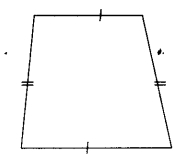

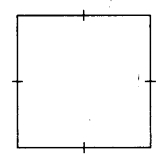

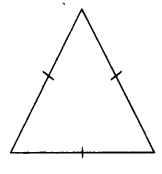

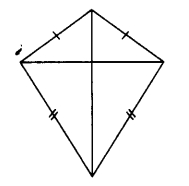
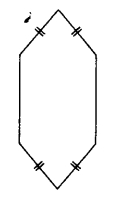

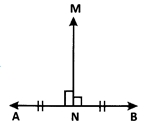

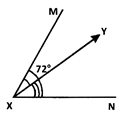
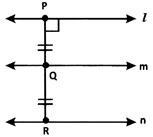



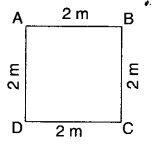 (a) 8m
(a) 8m